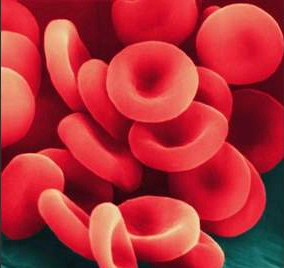Indian-American helps develop synthetic red blood cells
 Washington, Dec 18 : Researchers led by an Indian-American have developed synthetic particles that closely mimic the characteristics and key functions of natural red blood cells (RBCs), including softness, flexibility, and the ability to carry oxygen.
Washington, Dec 18 : Researchers led by an Indian-American have developed synthetic particles that closely mimic the characteristics and key functions of natural red blood cells (RBCs), including softness, flexibility, and the ability to carry oxygen.
The primary function of natural RBC is to carry oxygen, and the synthetic RBCs or sRBCs do that very well, retaining 90 percent of their oxygen-binding capacity after a week.
The sRBCs also, however, have been shown to deliver therapeutic drugs effectively and with controlled release, and to carry well-distributed contrast agents for enhanced resolution in diagnostic imaging.
"This ability... really opens up a whole new realm of possibilities in drug delivery and similar applications," said study leader Samir Mitragotri, chemical engineering professor at the University of California Santa Barbara (UCSB).
Mitragotri, who did his B. Sc in chemical engineering from University Institute of Chemical Technology, Mumbai, in 1992, said: "We know that we can further engineer sRBCs to carry additional therapeutic agents, both encapsulated in the sRBC and on its surface."
Mitragotri, his research group, and their collaborators from the University of Michigan succeeded in synthesising the particles by creating a polymer doughnut-shaped template, coating the template with up to nine layers of hemoglobin and other proteins, then removing the core template.
The resulting particles have the same size and flexibility, and can carry as much oxygen, as natural RBCs, said an UCSB release.
The flexibility, absent in "conventional" biomaterial carriers, gives the sRBCs the ability to flow through channels smaller than their resting diametre, stretching in response to flow and regaining their discoidal shape upon exiting the capillary, just as their natural counterparts do.
The findings appear online in the Proceedings of the National Academy of Science. (IANS)